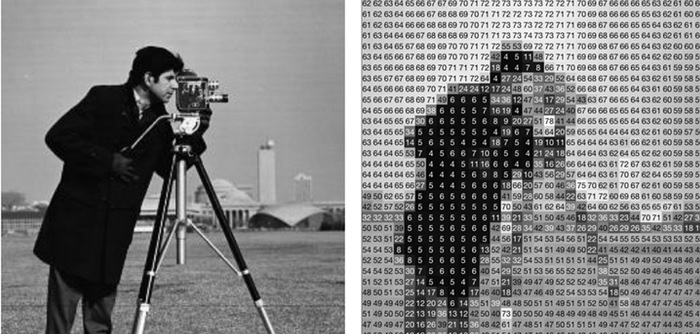10 Ways Computer Vision and Data Analytics Help Your Business: Computer Vision Analytics
To most people, a digital image is just a picture. But to a computer, an image is a tapestry of pixels to be broken down and analyzed. The extraction of information from still images and even video, using image processing techniques including algorithms, will be monetized shortly.
There are two forms – Machine Vision, which is the more “traditional” form of this tech, and a digital world offshoot, Computer Vision (CV).
While the first is largely for industrial use, cameras on a conveyor belt in an industrial plant being an example, the second is to teach computers to extract and understand data “hidden” within digital images and videos.
This August, Facebook said it was open-sourcing its efforts for developers to further develop its Computer Vision tech. The post by FB research scientist Piotr Dollar posted this image to explain the difference between human and computer vision.

When humans look at an image, they can identify every object in it (left), unlike what most computers see (right). Facebook AI Research wants to push machine vision to a similar goal – understand images and objects at the pixel level.
Want to Explore Our Business Intelligence and Analytics Services?
Here’s a quick look at Computer Vision emerging tech and its current uses:
- Computer Vision’s main role is to determine whether an image contains a certain object. Algorithms automatically analyze images and extract information
- Automated computer vision is not yet reliable enough to detect anomalies or track objects. Hence, in such cases, humans are still in the analysis loop to assess the situation
- Certain global companies including e-commerce sites have already started using image analysis in their predictive analytics efforts to forecast what their customers will want next
- Computer Vision can improve Internet search engine results. The technology can contextualize images in searches. This means it can tag and identify objects, and even the settings in your uploaded photographs
- Facial recognition techniques used by social networks and other companies for tagging people in photographs are based on CVs (computer vision). Facebook has developed this technology to identify someone even if that person’s face was covered up
- The applications of CV (computer vision ) include augmented reality, biometrics, face recognition, gesture analytics, and robotics
- Developers are about to release search engines for image sharing services such as Instagram that will sift through and make sense of the data from the stream of photos uploaded by millions of users
- Remote Controlled Drones use Computer Vision to recognize objects.
- Some IT companies like Microsoft, for example, which has a Cognitive Services division. This division offer APIs to help users extract rich information from images to categorize and process visual data.
- Retailers in the UK and the US have started using Computer Vision to let customers “try out” furniture and wallpaper in their own room before buying.
Thoughts or Comments? Write to us at [email protected]
An Engine That Drives Customer Intelligence
Oyster is not just a customer data platform (CDP). It is the world’s first customer insights platform (CIP). Why? At its core is your customer. Oyster is a “data unifying software.”
Liked This Article?
Gain more insights, case studies, information on our product, customer data platform


No comments yet.